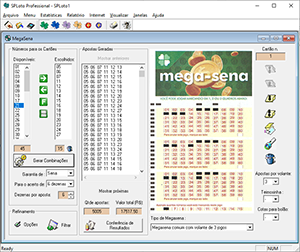Unlocking the Brilliance: Demystifying Lab Grown Diamonds’ 4Cs
Lab grown diamonds are revolutionizing the jewelry industry, offering consumers an ethical and sustainable alternative to mined diamonds. As the demand for lab grown diamonds continues to rise, understanding the 4Cs becomes crucial for making informed purchasing decisions. In this comprehensive guide, we delve into the intricacies of lab grown diamonds and explore the significance of the 4Cs – clarity, color, cut, and carat weight.
Introduction to Lab Grown Diamonds
What are lab grown diamonds?
Lab grown diamonds, also known as synthetic or cultured diamonds, are created in laboratories using advanced technological processes that mimic the natural conditions required for diamond formation. These diamonds possess the same chemical composition, physical properties, and optical brilliance as their natural counterparts.
Growing popularity and advantages
In recent years, lab grown diamonds have gained significant traction in the jewelry market due to their ethical and eco-friendly production methods. Unlike mined diamonds, which often involve environmental destruction and human rights issues, lab grown diamonds are produced sustainably with minimal impact on the planet.
Understanding the 4Cs
The 4Cs – clarity, color, cut, and carat weight – serve as the universal standards for evaluating the quality and value of diamonds,lab grown diamonds 4Cs, both natural and lab grown. Let’s delve deeper into each of these factors and their implications for lab grown diamonds.
Clarity
Definition and significance
Clarity refers to the presence of internal flaws (inclusions) and external blemishes man made diamonds. The clarity grade indicates the degree to which these imperfections are visible under magnification. In lab grown diamonds, clarity is a crucial factor as it influences the diamond’s brilliance and transparency.
Comparison with natural diamonds
While natural diamonds may contain inclusions formed over millions of years, lab grown diamonds are typically cleaner and have fewer imperfections. This is attributed to the controlled environment in which they are grown, resulting in higher clarity grades for many lab grown stones.
Common clarity grades in lab grown diamonds
Lab grown diamonds are graded using the same clarity scale as natural diamonds, ranging from Flawless (FL) to Included (I). However, it is common to find lab grown diamonds with higher clarity grades due to the absence of natural impurities.
Color
Role of color in diamond grading
Color is another essential aspect of diamond evaluation, as it directly impacts the stone’s beauty and value. In lab grown diamonds, color is assessed based on the absence of color, with the most valuable stones being completely colorless.
Color scale for lab grown diamonds
Similar to natural diamonds, lab grown diamonds are graded on a color scale ranging from D (colorless) to Z (light yellow or brown). However, lab grown diamonds often exhibit exceptional color consistency, allowing for more precise color grading.
Factors influencing color in lab grown diamonds
The color of a lab grown diamond is influenced by various factors, including the type of growth method used, the presence of trace elements, and the purity of the diamond seed. Advanced technologies enable diamond growers to control these factors, resulting in diamonds with consistent and desirable colors.
Cut
Impact of cut on diamond brilliance
The cut of a diamond plays a significant role in maximizing its brilliance and fire by optimizing the reflection and refraction of light. In lab grown diamonds, precision cutting techniques are employed to enhance the stone’s sparkle and visual appeal.
Precision of lab grown diamond cuts
Lab grown diamonds are renowned for their precise and symmetrical cuts, thanks to the advanced machinery and technology used in the cutting process. This meticulous craftsmanship ensures that each facet is aligned correctly to maximize light performance.
Popular cut styles for lab grown diamonds
Lab grown diamonds 4Cs are available in a wide range of cut styles, including round brilliant, princess, cushion, and emerald cuts. Each cut has its unique characteristics and visual impact, allowing consumers to choose a style that suits their preferences.
Carat Weight
Definition and measurement of carat weight
Carat weight refers to the unit of measurement used to determine the mass of a diamond. One carat is equivalent to 200 milligrams, and diamonds are often measured to the nearest hundredth of a carat for precision.
Perception of size in lab grown diamonds
Due to their affordability compared to natural diamonds, lab grown diamonds offer consumers the opportunity to purchase larger stones for the same budget. This perception of size enables individuals to achieve their desired diamond size without compromising on quality.
Balancing carat weight with other factors
While carat weight is an essential consideration, it is essential to balance it with other factors such as cut, color, and clarity to ensure overall diamond quality. A well-proportioned diamond with excellent cut quality can appear more significant and more brilliant than a larger diamond with inferior characteristics.
Clarity Grading in Lab Grown Diamonds
GIA clarity grading system
The Gemological Institute of America (GIA) is the leading authority in diamond grading and certification. Their clarity grading system, which ranges from Flawless (FL) to Included (I), is universally recognized and applied to both natural and lab grown diamonds.
Identifying inclusions in lab grown diamonds
Despite their high clarity grades, lab grown diamonds may still contain internal inclusions and surface blemishes. These imperfections are typically

















